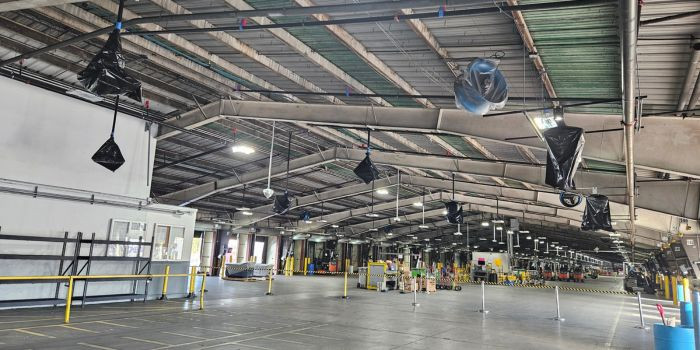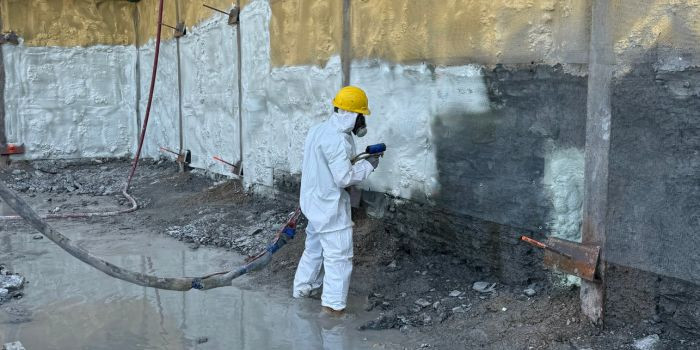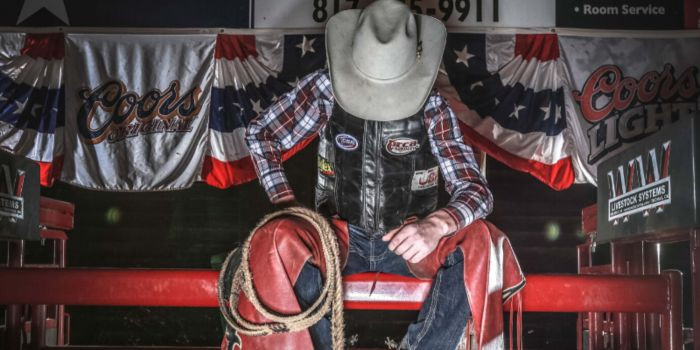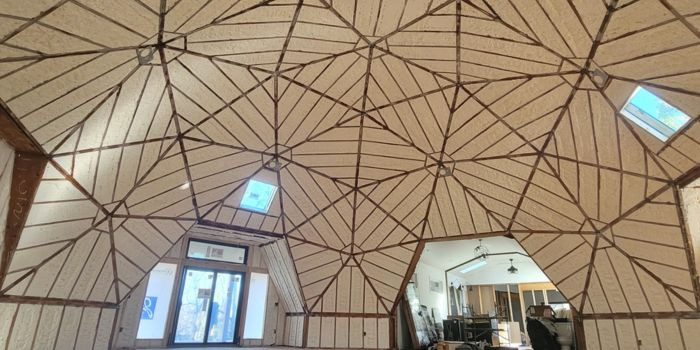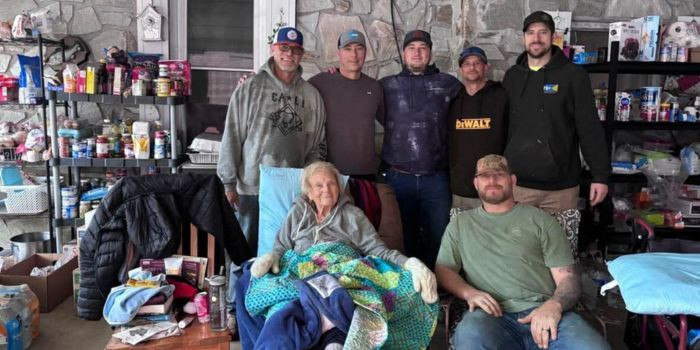Faith, Trust, and a Little Bit of... Spray Foam
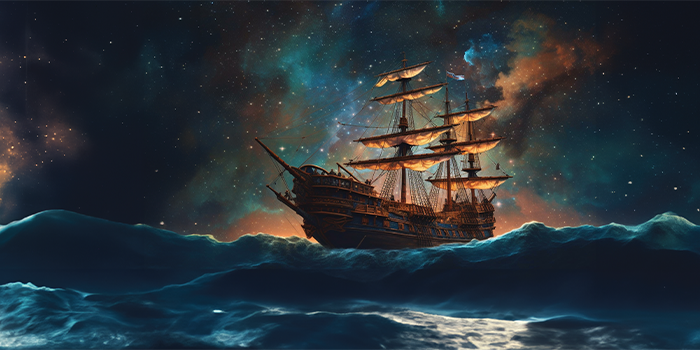

SPRAY FOAM MAGAZINE – Peter Pan and Wendy, released on Disney+ earlier this year, is a modern live-action remake of the classic fairy tale, Peter Pan. The film features beautiful, scenic backdrops in its depiction of Neverland, most of which was filmed on site in British Columbia, Canada. But other larger-than-life set pieces required more than just a gorgeous location and good lighting to achieve. What does it take to create Neverland? The answer is a mixture of faith, trust, pixie dust, and a dash of spray polyurethane foam, and polyurea for good measure.
Rob Humphries owns Blue Frog Spray Foam & Opp Insulation, based in Gibson, British Columbia. Prior to the pandemic, Humphries’ operation primarily serviced residential jobs, but in recent years, they have noticed a boom of film industry gigs requesting spray foam services. Humphries recalls, “The construction side slowed down a bit, but there was still a backlog in the film industry. So, it became quite a big part of our operation these last few years.”
Humphries shop in Gibson is just a couple hours away from Vancouver, which is known as Hollywood North, due to its ever-growing popularity in the film industry thanks to its breathtaking natural landscapes. Humphries has an excellent reputation for his work in the local area, which put him on the radar of Jack Gauvreau, the lead sculptor at Mammoth Studios in Burnaby, BC, near Vancouver.
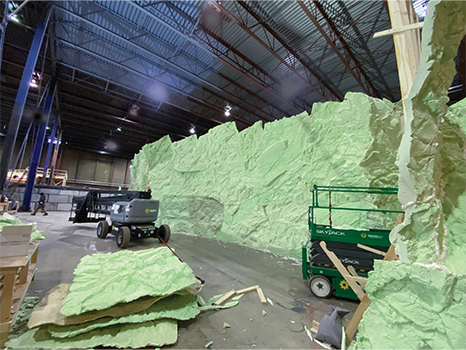
The studio had started work on Peter Pan and Wendy, and needed a reliable spray foam company to work alongside the studio’s creative teams to produce mass amounts of rock formation panels, brick work, false bark, wood paneling, and much more out of spray foam.
Previously, the studio had been working with another company, but it did not work out. Gauvreau spoke to someone from Bolair, a Canadian company that supplies spraying machines and accessories. Bolair heralded Blue Frog and Rob Humphries as upholding the gold standard of workmanship in the spray foam industry, and the studio decided to hire Humphries based on Bolair’s good word. This led to over two years of work for Rob and his team on the Peter Pan and Wendy project alone. Blue Frog still has an ongoing professional relationship with Mammoth Studios today, and even bought a separate portable rig to live in the studio’s shop permanently.
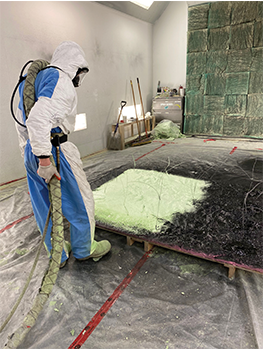
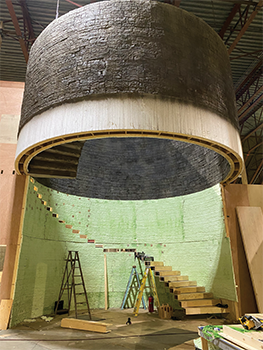
After accepting Mammoth’s offer, Humphries wasted no time coordinating with Genyk, a foam manufacturer he used frequently and trusted. He demonstrated the Genyk 2lb closed-cell spray foam’s properties to Gauvreau, who was impressed with the controlled way it sprayed, and how the final presentation looked. Genyk foam is a light green color when sprayed, rather than the yellow or off-white color of most spray foams, but the studio did not mind the color as the art team would paint each piece of foam with latex paint, and the final product would be nearly unrecognizable from the sprayed foam at the beginning of the process. After gathering all the foam, supplies, and spraying equipment, they convened at the Mammoth Studio’s shop in Vancouver to start spraying thousands of panels and pieces.
Believe it or not, spray foam makes regular film appearances, though audiences would never be able to tell. As a sculptor, Gauvreau testifies that spray foam is a reliable medium for all types of creative projects, “I’ve been using spray foam for the last 20 years. It’s a technology that works very well for us.”
Spray foam is suitable for many creative and artistic projects, and is especially popular for projects that demand more of a natural aesthetic. The materials used are entirely project-specific, but spray foam was best suited for Peter Pan and Wendy due to the sheer volume of pieces needed. To create the sprawling rock walls, teams had to process hundreds of panels, and spray foam is the fastest and most efficient material to work with in this instance. Additionally, the studio planned to partially submerge some of the panels in water, and the waterproof nature of closed-cell foam bode well for long term durability. What’s more, the versatile and easy-to-work nature of SPF meant that they did not need a large team to create a high number of panels.
On the spray foam side, Humphries had a team of three, including himself, while the studio’s creative teams (art and sculpting) had a team of about 15. Together, the teams coordinated to build larger than life, realistic yet magical set pieces, such as Captain Hook’s ship, the Lost Boy’s huts, daunting, panoramic, and semi-submerged rocky cliff facings. The studio’s sculpting team, led by Gauvreau, created master silicone molds used to create different rock textures, such as craggy and jagged, or smooth and ocean-worn. These molds were key to an efficient spray foam technique, and allowed Humphries’ team to create hundreds of repeatable designs quickly and easily. The set design teams created these silicone molds, and when not covered in spray foam, they look like raised platforms adorned with bits of jutting wire.
There were different molds designed to make craggy and smooth looks, and the molds were designed in such a way to keep all the panels looking similar, though not necessarily uniform. The studio instructed Humphries’ team how many of which type of panel they needed, and the team would get to work spraying hundreds of panels.
The Blue Frog team worked primarily at the Mammoth Studios shop in Burnaby, BC so that they could stay in close contact with the needs of the creative teams. Safety was a major priority for the studio, who held daily safety meetings and maintained impeccable standards. The studio provided on-site spray foam booths to contain fumes and maintain a safe, clean environment while applying a massive amount of spray foam over a long period of time. In these spraying booths, Humphries and his team had a contained area to spray large amounts of onto the specialized silicone molds, over and over again. The spray booths protected others in the area from errant fumes from the foam. Furthermore, the applicators protected themselves wearing industry standard Tyvek suits, gloves, goggles, and respirators. Because this project also took place at the height of COVID, everyone in the studio wore standard face masks daily and also participated in weekly antigen tests.
Despite hindrances from the pandemic, Blue Frog’s team and Mammoth Studio’s creative teams worked well alongside each other. The silicone master molds the sculpting team’s created helped Humphries’ team to create hundreds of repeatable panels that the art team could then paint and sculpt to look like a real rock wall, or piece of bark, or any other natural or magical phenomenon the set demanded. The master molds allow them to get a consistent appearance in each of the pieces created, saving time, energy, and spray foam by ensuring quality and consistency.
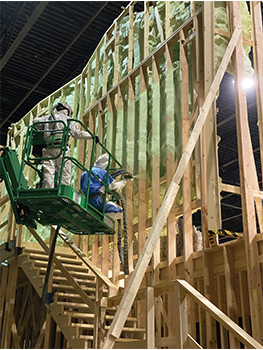
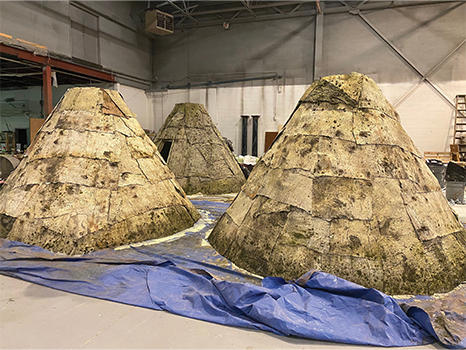
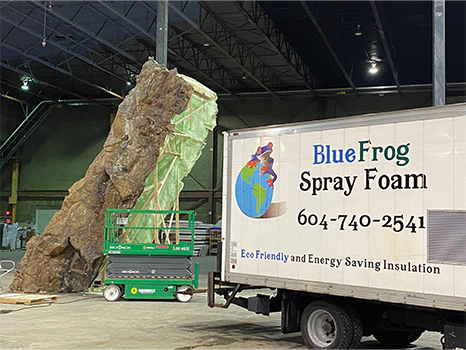
When creating repeatable pieces such as the various rock formations, Humphries’ team followed a specific routine to achieve the best results. First, they sprayed the mold with Chem-Trend’s Spray Foam Silicone Mold Release. They let the mold release sit for a few seconds so that it can activate, and then the mold is ready for an application of spray foam. Humphries’ team applied anywhere from one to three inches, depending on the needs of the specific piece, of closed-cell spray foam. They pull the piece out of the mold after about 30 seconds, while the foam is still semi-soft, that way nothing gets stuck in the mold. They repeat this process again and again, generating stacks of rock-like panels that the studio’s art department can then finish sculpting and painting to perfection.
In addition to using Genyk’s closed-cell polyurethane foam, some set pieces, such as the false tree bark, called for Genyk Polyurea instead. Humphries explains, “We would spray polyurea into these molds that look like bark, and then they’d wrap that polyurea chunk of bark and wrap it around a post, then it’s impossible to tell it isn’t a real tree, once it’s painted and all the staples are covered in moss.” He likes this technique because polyurea is more flexible than polyurethane foam.
The flexible, versatile nature of polyurea provides a great alternative to the rigidity of closed-cell foam on the rock walls, a perfect example of how different pieces call for different materials. Textured rock walls and false bark were not the only uses for polyurea on the set. They also used polyurea to create long, flexible pieces of fake wood for Captain Hook’s ship. The finished product looks just like a long wooden plank, when in actuality it’s a piece of polyurea that has been sculpted and painted to perfection, forming the walls of a pirate ship’s hull and stern without using real wood at all.
After Humphries’ team finished spraying hundreds of repeatable panels, they handed the panels off to the studio’s creative team. The creative team would then sculpt and paint the pieces, turning them into incredible pieces of scenery. Sometimes this involved breaking the larger panels into smaller pieces before joining them all back together to create a cliffside with natural looking imperfections.
Once the art teams had formed the pieces of the walls exactly how they wanted, Blue Frog would help affix the pieces together, joining the faux rock panels to the cliff structure’s wooden frame using SPF. For giant pieces like the cliffside rock wall, this involved strapping into a safety harness and going up to thirty feet high in a scissor lift, where Humphries would apply foam to the backside of the panels to hold them in place. After foaming all the panels in place, it is hard to believe that the imposing cliffside before them is made primarily of spray foam and not hardened pieces of sediment.
In addition to working primarily at the shop in Mammoth Studios, there were a few times Humphries and his team ventured out to do some work out in the lower mainland, where filming had already begun. Humphries recalls one job where they had to spray foam on the backside of a set piece to ensure its safety, “There was a false rock mound that required a lot of people to run over top of it, so they asked me to spray the backside of it to make sure it was safe for the actors to interact with.” From December 2020 to January 2022, Humphries’ team spent a ton of time helping create Neverland, one repeatable panel at a time. He found that spray foaming rock pieces on a movie set was not unlike some of the residential jobs he had performed in the past; the inside of the mound was a tiny space, much like an average crawl space he might have been working in just a few months prior, the only difference being an extra smattering of pixie dust along with the layer of spray foam.
For use by SprayFoamMagazine.com & Spray Foam Magazine
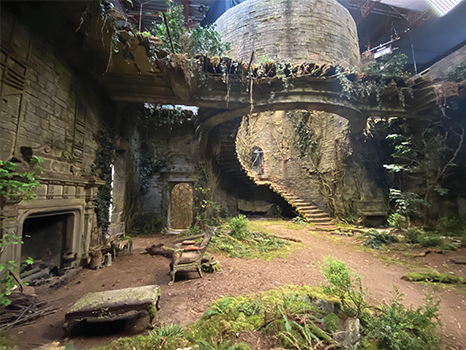
Disqus website name not provided.



